St. Peter’s Basilica is Italy’s largest, richest and most magnificent church. Located within the Vatican City in the middle of Rome, this church is iconic in its importance to the Catholic people and the history of Rome. As a work of architecture, it is regarded as the greatest building of its age, and this, along with its immense religious significance, makes it a popular tourist site and an important pilgrimage destination.
St. Peter's Basilica

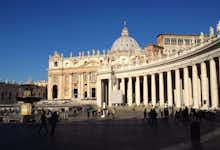
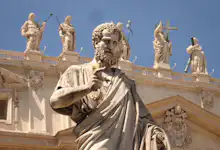
This Italian Renaissance Church, designed principally by Donato Bramante, Michelangelo, Carlo Maderno and Gian Lorenzo Bernini, is the most renowned work of Renaissance architecture and the largest church in the world. Besides its obvious historical and artistic significance, it has been described as "holding a unique position in the Christian world" and as "the greatest of all churches of Christendom". As the burial site of Saint Peter, many Popes have been interred at St. Peter's since the Early Christian period, and is hence one of the four highest ranking Churches or ‘Major Basilica’s’, and is the only one to be located in the Vatican City and hence directly under the jurisdiction of the Holy See. Seeing over 80,000 visitors per year, St. Peter’s Basilica is the perfect spot for history-lovers, artists, pilgrims and tourists alike.
The Vatican Museums, which contains the exemplary Sistine Chapel, is situated right next to St. Peter's Basilica.
Hours
• April-Sept 7:00 AM - 7:00 PM
• Oct-March 7:00 AM -6:00 PM
Address
Viale Vaticano, 00165 Rome, Italy
Get Directions
Quick Jumplinks to Navigate the Guide
- St. Peter's Basilica Tickets
- History of St. Pater's Basilica
- Beat the queue at St. Peter's Basilica
- St. Peter's Basilica Architecture
- Must-see at St. Peter's Basilica
- St. Peter's Basilica - All you need to know
- Insider Tips
St. Peter's Basilica Tickets
History of St. Pater's Basilica
Built on the orders of Emperor Constantine, the first Christian Emperor of Rome, the basilica was completed around 349AD at the site of a small shrine meant to mark the location of the tomb of St. Peter. The church was marked for renovation by Pope Nicholas V in the late fifteenth century, but once he died, these restoration plans were halted. A century later, Pope Julius II began to build a completely new church, and appointed architect Donato Bromante who introduced the structure with the high dome. The dome was further worked upon and changed by architects and designers like Michelangelo Buonarroti, Giacomo della Porta and Carlo Maderno. As a work of architecture, it is regarded as the greatest building of its age, and this, along with its immense religious significance, makes it a popular tourist site and an important pilgrimage destination.
Beat the queue at St. Peter's Basilica

Lines can be excruciatingly long at this popular tourist site. There are three ways that you can avoid them:
Take a Skip the line ticket
Book a skip-the-line Vatican Museums tour and use this door to skip the extra line for the church. However skip-the-line access are sought-after, so even the fast-track lines are long. This experience includes admission through a special entrance, so there are no lines whatsoever. Enter directly into the vast collection of private artwork that is the Vatican Museums.
Check out all skip the line ticket options for St. Peter's Basilica.
Take a guided tour
Guided tours of St. Peter's means you get access to a special ceremonial papal corridor, that goes directly from the Sistine Chapel to St Peter’s Basilica; and a knowledgeable guide leading the way. Please note that this only applies to visitors with an authorized guide: people on standard tickets to the Vatican Museums are diverted to the exit of the museums on the other side of the Vatican. The advantage of this is that you end your Vatican tour in St Peter’s with all of the expertise that this will bring.
Check out all the guided tours of St. Peter's Basilica.
Rome City Pass
The Rome City Pass is the ultimate entry ticket to Rome – not only do you get to skip all the lines and visit almost all the attractions in Rome and Vatican, but the passes also offer benefits like free travel on public transport, free hop-on hop-off bus tours and huge savings on tickets. You can get all these benefits at whopping savings of up to 30% on ticket costs.
Check out the Rome City Pass.
St. Peter's Basilica Architecture

Façade
After Carlo Maderno inherited the project in 1605, he designed the monumental facade that has contributed to this building’s astonishing architectural design. It is 48m high and 115m wide. Eight columns support the upper attic on which 13 statues stand representing Christ the Redeemer, St John the Baptist and the 11 apostles. An inscription on the entablature commemorates the fact that the façade was built during the pontificate of Pope Paul V Borghese. The central balcony is known as the Loggia della Benedizione, and it’s from here that the pope delivers his Urbi et Orbi (to the city and to the world) upon his election, and at Christmas and Easter.
Interior
The atrium, or the ancient portico of the early Christian basilicas. is considered one of the most remarkable works of Carlo Maderno. The cavernous 187m-long interior covers more than 15,000 sq m and is an immense and magnificent space, richly decorated with Baroque stuccos, mosaics and statues, almost overwhelming at first glance. Bernini's famous baldachin occupies the centre, made with bronze taken from the Pantheon. It stands over the high altar, which itself sits on the site of St Peter's grave. The pope is the only priest permitted to serve at the altar.
Dome
Designed by Michelangelo, the dome was completed by Giacomo Della Porta, Michelangelo’s pupil. The dome, with an inner diameter of 42.56 metres measures 136.57 metres from the base to the top of the cross. There is a viewing platform at the base of the lantern from where you can enjoy an unparalleled panorama over Rome, which can be reached by stairs or elevator. This dome was used as a model for other domes in the western world, like Saint Paul’s in London (1675), Les Invalides in Paris (1680-1691) and the Capitol building in Washington (1794-1817).
Grottoes
The grottos contain chapels dedicated to various saints and tombs of kings, queens and popes, dating from the 10th century, and are found sandwiched between the Renaissance Basilica and Constantine’s 4th century basilica. The holiest spot here is Peter’s tomb, containing the "memory", built in the 4th century on the spot were the Apostle’s tomb was venerated. The monuments to Paul VI (1978) and Pope John Paul II (2005) are also in the grottos. There is also a fresco by the 14th century Roman painter Pietro Cavallini called “Madonna della Bocciata”, because of Mary’s swollen face. According to an old legend, her face bled because a drunken soldier had thrown a bowl into the holy image after he lost a game of bowls.
Vatican Necropolis
The Vatican necropolis, or scavi, is often confused for the grottoes, the latter of which resulted from the construction of St. Peter's Church and is located on the ground level of the old Constantinian basilica. It was originally a burial ground built on the southern slope of the Vatican Hill, adjacent to the Circus of Caligula. In accordance with the Roman law, it was forbidden to bury the dead within the city walls. For this reason, burial grounds sprang up along the roads outside of the city cemeteries. It is thought to be the site of Apostle Peter’s tomb.
Must-see at St. Peter's Basilica

1. Pieta: The Pieta is a religious sculpture carved by Michelangelo when he was 24 years old – it is also the only piece of artwork he has ever signed, with his signature found across Mary’s chest. It was carved from a single slab of Carrara marble. Commissioned by French cardinal Jean de Billheres, who served the church in Rome and wanted to be remembered long after he'd died, he hired Michelangelo to make a memorial for his tomb that would capture a scene that was popular in Northern European art at the time: the tragic moment of the Virgin Mary taking Jesus down from the cross.

2. St. Peter’s Baldachin: St. Peter’s Baldachin is a large Baroque sculpted bronze canopy over the high altar of St. Peter's Basilica in the Vatican City. Commissioned by Pope Urban VIII, the work began in 1623 and ended in 1634, the story of its design is interesting - when the Basilica had finally been finished it seemed as though something was still missing: there was no connection between the main body designed by Maderno and Michelangelo’s majestic dome. Bernini came up with a gigantic, yet perfect solution. He designed the Baldacchino and he placed it in the most holy spot in the entire church, right above the tomb of Saint Peter, as if the crowds of faithful had brought it and placed it there over the body of the apostle.
3. Statue of St. Longinus: The statue of St. Longinus is a 4-metres-tall sculpture by the Italian artist Gian Lorenzo Bernini. Longinus was the blind Roman soldier who speared Jesus in the side during the crucifixion. He was alleged to have converted to Christianity after the event, having realized Jesus was the son of God. When converting to Christianity, Longinus was cured of his blindness and regained his sight, experiencing not only a spiritual awakening but a physical one as well. The statue depicts Longinus, with his arms extended, receiving the divine light. This divine light, in practice, would come through the window's of St. Peter's Basilica.

4. St. Peter's Tomb: Saint Peter's tomb is a site under St. Peter's Basilica that includes several graves and a structure said by Vatican authorities to have been built to memorialize the location of Saint Peter's grave. Excavations beneath St Peter's Basilica have uncovered part of the original church and a necropolis with what is held to be the Tomb of St Peter. In 1942, the bones of an elderly, strongly built man were found here, in a box hidden behind a wall covered by pilgrims’ graffiti. In 2013 Pope Francis publicly displayed the relics for the first time.

5. The Chair of St. Peter: Also called the Throne of St. Peter, this relic is a wooden throne that tradition claims the Apostle Saint Peter, the leader of the Early Christians in Rome and first Pope, used as Bishop of Rome. The relic itself is described as an oaken chair damaged by cuts and worms, while the back and front are trimmed with carved ivory. The wooden throne was a gift from Holy Roman Emperor Charles the Bald to Pope John VIII in 875. The spiritual significance of the chair is a symbol of the special mission of Peter and his Successors to tend Christ’s flock, keeping it united in faith and in charity
St. Peter's Basilica - All You Need to Know
Getting to St. Peter's Basilica
Vatican City is to the north of the city centre of Rome and is easily reached independently by public transport plus and even by Rome hop-on hop-off tourist buses which have a stop here.
1. Metro
The Rome Metro has a station just outside the Vatican at Ottaviano-S. Pietro. Line A direction Battistini, Ottaviano or Cipro stations of the Metro has trains running every few minutes. It's a 5 minute walk from the Metro to both St Peter's Square and the Vatican Museums.
2. Bus
49, stop in the square in front of the Vatican Museums
32, 81, 982, stop at Piazza del Risorgimento
492, 990, stop in Via Leone IV / Via degli Scipioni
Timings
- April-Sept 7:00 AM - 7:00 PM
- Oct-March 7:00 AM -6:00 PM
Mass Schedule for St. Peter's Basilica
WeekDays
8:30 AM- Blessed Sacrament Chapel In Italian
9:00 AM, 10:00 AM, 11:00 AM, 12:00 PM - Altar of St. Joseph (Left Transept), In Italian
5:00 PM - Altar of the Chair (Cattedra) In Latin, with singing, homily in Italian
Sunday and Holy Days
9:00 - Altar of the Chair (Cattedra) - Mass for the Parish, in Italian
10:30 - Altar of the Chair (Cattedra) - Solemn Mass in Latin, with singing, homily in Italian
11:30 - Blessed Sacrament Chapel - In Italian
12:15 - Altar of the Chair (Cattedra) - In Italian
1:00pm - Altar of St. Joseph - (Left Transept), In Italian
4:00pm - Altar of the Chair (Cattedra) - In Italian
5:45pm - Altar of the Chair (Cattedra) - In Italian
Insider Tips
- Though entrance to St. Peter’s Basilica is free, entering the Vatican Museums isn’t. But be sure not to miss the latter, for the historical and cultural significance of both are equally important to getting the full experience.
- Timings: Ensure that you visit the Vatican early in the morning to avoid long queues, and then walk twenty minutes to the Basilica. The latter is also closer to the city, making it easier to exit.
- Investing in a guide book may come in handy, for a lot of the charm of these monuments is their historical significance. It may also help with directions – it can get confusing inside!
- Visiting both the Vatican Museums and the Basilica could take around 6-7 hours, so plan your meal times accordingly.
The post Discover The Most Visited Church In The World With These St. Peter’s Basilica Tickets appeared first on Headout Blog.
Article source here:Headout Blog

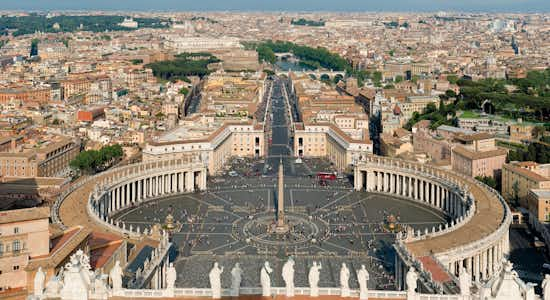
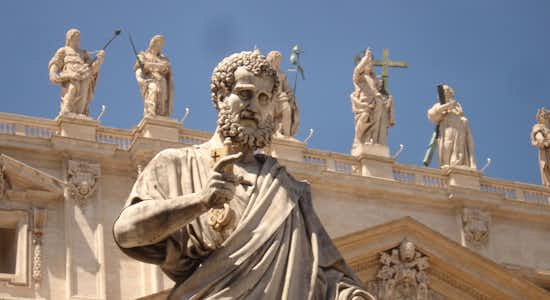
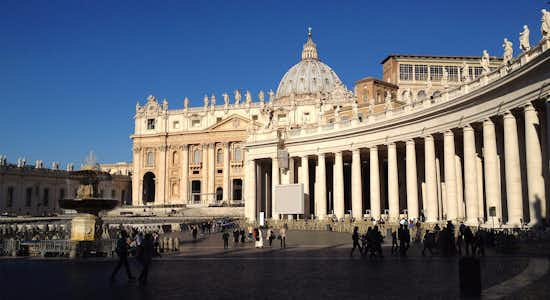
No comments:
Post a Comment